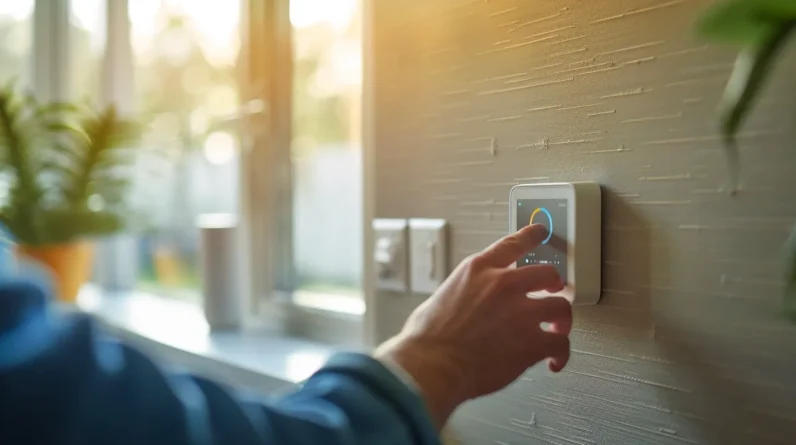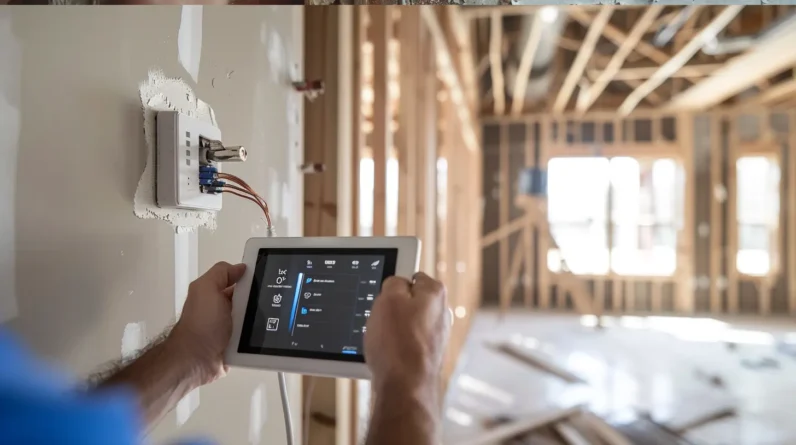
Smart home devices only reach their full efficiency potential when we actively manage them. We’ve found that default settings deliver just 30-40% of possible energy savings because they’re designed for broad appeal, not your specific usage patterns. Without regular firmware updates, customized automation rules, and ongoing monitoring of consumption data, these devices become convenient gadgets rather than efficiency multipliers. The difference lies in treating them as dynamic systems requiring seasonal adjustments, routine fine-tuning, and proactive maintenance. Below, we’ll show you exactly how to reveal those hidden savings.
The Set-It-and-Forget-It Myth: Why Smart Devices Need Active Management
While manufacturers market smart home devices as effortless automation, the reality tells a different story. We’ve discovered that ideal performance requires ongoing attention and fine-tuning. System complexity increases exponentially as you add devices, creating interdependencies that demand active oversight.
Think of your smart home as a sophisticated ecosystem rather than a standalone appliance. We need to monitor energy consumption patterns, adjust automation rules seasonally, and update device settings as our routines evolve. The user experience degrades rapidly without this management—thermostats overheat empty rooms, lights activate unnecessarily, and security systems trigger false alarms.
True efficiency comes from treating smart devices as tools requiring skillful operation, not magical solutions. We must embrace the role of active managers to activate their full potential.
Customization Is Key: Default Settings Won’t Maximize Your Savings
The most overlooked aspect of active management? Customization. Default settings are designed for broad appeal, not your specific usage patterns. We need to dig into the user interface and configure each device to match our actual behaviors. That smart thermostat won’t optimize your heating schedule until you’ve programmed when you’re actually home. Your smart lights can’t reduce energy waste if they’re cycling on generic timers rather than your real routines.
Device personalization transforms these tools from convenient gadgets into genuine efficiency multipliers. Study your consumption data, adjust sensitivity thresholds, and fine-tune automation rules. The difference between default and optimized settings often represents 30-40% additional savings. Your devices have the capability—but maximizing returns requires you to wield the controls purposefully.
Regular Updates and Maintenance Keep Your System Running Efficiently
Just as smartphones need software updates to patch vulnerabilities and improve performance, our smart home devices require consistent maintenance to operate at peak efficiency. We can’t install these systems and forget them—they demand active user engagement to deliver top-notch results.
Effective device management means checking for firmware updates monthly, replacing sensor batteries proactively, and cleaning hardware components that affect readings. A dusty motion sensor triggers false alerts, wasting energy. Outdated software misses efficiency improvements that manufacturers develop over time.
We should establish a maintenance calendar: review energy reports weekly, test automations monthly, and audit device performance quarterly. This disciplined approach guarantees our smart home investment continues delivering maximum savings rather than becoming another underperforming technology gathering digital dust.
Learning Your Device’s Full Capabilities Takes Time and Effort
Although manufacturers advertise their devices as “plug-and-play,” mastering a smart home ecosystem demands significant user investment. We can’t expect to activate advanced features without dedicating time to user guides and device tutorials. Most owners barely scratch the surface, using perhaps 20% of their device’s capabilities.
We’ve found that systematic exploration yields the best results. Block dedicated time weekly to test one new feature. Work through manufacturer tutorials methodically rather than skipping ahead. Document your custom automations and settings for future reference.
The payoff is substantial. Users who invest in learning create sophisticated routines that genuinely streamline their lives, while those who don’t end up with expensive gadgets performing basic tasks their old devices handled perfectly well.
Monitoring Energy Patterns Reveals Optimization Opportunities
Smart meters and monitoring apps transform abstract energy consumption into actionable data we can actually use. We’re no longer guessing which devices drain power—we’re conducting precise energy audits that pinpoint inefficiencies. By analyzing consumption patterns over weeks, we’ll identify phantom loads, peak usage times, and automation opportunities that weren’t obvious before.
| Pattern Observed | Optimization Action |
|---|---|
| HVAC runs during unoccupied hours | Create occupancy-based schedules |
| Standby power waste overnight | Configure smart plugs with cutoff times |
| Peak rate electricity usage | Shift high-draw tasks to off-peak windows |
| Inconsistent thermostat settings | Implement adaptive temperature learning |
This visibility empowers us to make data-driven decisions. We’ll refine automation rules, adjust schedules, and eliminate wasteful habits that monitoring alone reveals.
Adapting Your Habits to Work With Your Technology
While technology automates our homes, we’re the ones who determine whether these systems actually save energy or just add complexity. Device Integration works best when we align our routines with how our smart devices operate. If your thermostat learns you’re home at 6 PM, arriving at 4 PM repeatedly undermines its efficiency algorithms. We need to calibrate User Expectations around what automation can realistically achieve. This means understanding each device’s learning curve and adapting our behavior during that period. Schedule your high-energy tasks when your solar panels produce peak power. Let your smart washer run during off-peak hours. The technology provides the framework, but we maximize efficiency by working within it rather than against it.
Conclusion
We’ve equipped our homes with brilliant technology, but remember—these devices aren’t magic wands. They’re power tools that require our hands on the controls. The efficiency we’re chasing won’t materialize from factory settings alone. We need to customize, monitor, update, and adapt. Our smart homes will only be as intelligent as the effort we invest. When we actively manage our systems, we’ll activate the energy savings and convenience we’ve been promised all along.







